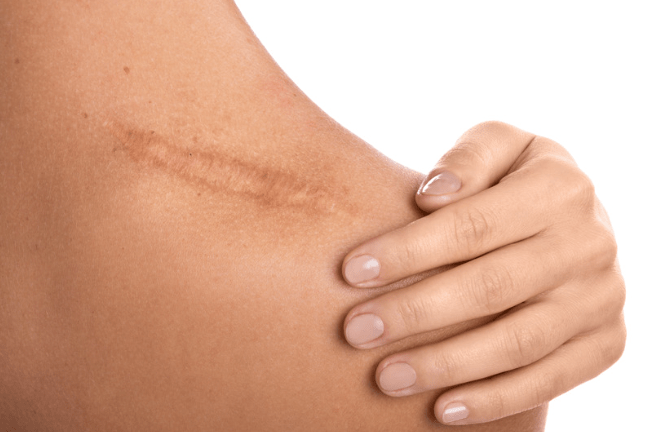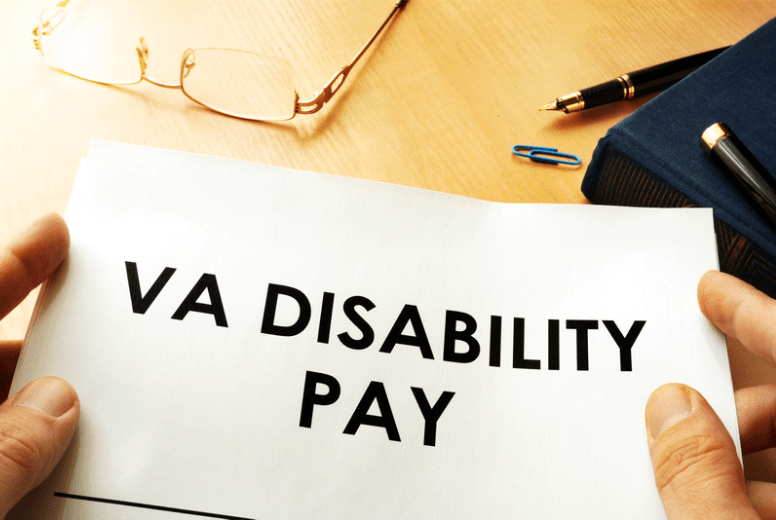
Scars and VA Disability Compensation
Many service injuries result in permanent scars and disfigurement. When a service member is honorably discharged from the military, they can seek a VA disability rating for functional impairments and permanent scars.
According to the VA’s Annual Benefits Report for 2018, scars are the fourth most common disability among veterans, with over 1 million veterans affected. Scar disabilities are rated under five separate diagnostic codes. They are rated based on the number of scars or disfigurements a veteran has, the area of the body affected, their permanence, and the presence of pain or instability.
Eight Characteristics of Disfigurement
The VA Schedule for Rating Disabilities (VASRD) gives eight characteristics of disfigurement that the VA incorporates into how it rates scars for disability compensation purposes:
- The scar is 5 or more inches in length
- The width of the scar is ¼ inch at the widest part
- The surface of the scar elevates or depresses when pressed upon
- The scar is adherent to the soft tissue underneath it
- Hypopigmentation (loss of skin color) or hyperpigmentation (darkening of skin color) in an area larger than 6 square inches
- Abnormal skin texture in an area larger than 6 square inches
- The underlying soft tissue beneath the scar is missing in an area larger than 6 square inches
- Skin is inflexible and indurated (i.e. hard) in an area exceeding 6 square inches
Scars of Disfigurement of the Head, Face, or Neck
There are three main things the VA takes into account when assigning a VA Disability rating for scars under diagnostic code 7800: tissue loss, distortion or asymmetry, and characteristics of disfigurement.
| Rating | Description |
| 80% | Veterans who display tissue loss and “gross distortion or asymmetry of three or more features” such as the nose, chin, forehead, eyes (including eyelids), ears, cheeks, or lips; OR display 6 or more characteristics of disfigurement |
| 50% | Veterans who experience tissue loss and gross distortion or asymmetry of two or more of the features listed above; OR have 4-5 characteristics of disfigurement |
| 30% | Veterans who present with tissue loss and gross distortion or asymmetry of one of the features listed above; OR 2-3 characteristics of disfigurement |
| 10% | Veterans who display 1 characteristic of disfigurement |
Scars Elsewhere on the Body that are Deep and Nonlinear
Nonlinear scars located in different areas of the body are rated separately. Each VA Disability rating is based on the area of qualifying scars that affect that portion of the body.
| Rating | Description |
| 40% | Nonlinear deep scar that occupies area(s) of 144 square inches or more |
| 30% | Nonlinear deep scar that occupies area(s) of at least 72 but less than 144 square inches |
| 20% | Nonlinear deep scar that occupies area(s) of 12 but less than 72 square inches |
| 10% | Nonlinear deep scar that occupies area(s) of at least 6 but less than 12 square inches |
Superficial Nonlinear Scars Not of the Head, Neck, or Face
Superficial scars are not permanent in nature and do not affect the underlying soft tissue. These scars are rated separately for each area they affect. Veterans are only able to get a 10% disability rating for superficial nonlinear scars affecting one area of the body other than the head, face, or neck:
- If the area(s) of the scar(s) is 144 square inches or more then the veteran should be rated at 10%
Painful or Unstable Scars That Qualify For VA Disability
An unstable scar is one where “there is frequent loss of covering skin over the scar.” If more than one scar is considered unstable then an additional 10% may be added to the rating.
| Rating | Description |
| 30% | 5 or more unstable or painful scars |
| 20% | 3-4 unstable or painful scars |
| 10% | 1-2 painful or unstable scars |
Other Scars Including Linear Scars That Qualify For VA Disability
VA Disability ratings for other scars (including linear scars) are based on the disabling effect the scar presents. For example, if the veteran’s scar is linear long a joint and prevents flexion, they will be rated on the limitation of motion.
Veterans Help Group has been supporting veterans in getting the benefits they deserve since 1995. If you or a loved one served, and suffer from scarring or disfigurement, we are here to help. Call Veterans Help Group at 855-855-8992 or complete our free veterans benefits case evaluation form.
READ MORE ABOUT THIS:
- MOST COMMON THINGS VETERANS DO TO WIN THEIR VA DISABILITY BENEFITS CLAIMS
- COMMON SECONDARY SERVICE-CONNECTED CONDITIONS
- MOST COMMON DISABILITIES AMONG WOMEN VETERANS
- TOP WAYS TO GET YOUR VA CLAIM APPROVED

How to Calculate Your VA Disability Back Pay
How to Calculate Your VA Disability Back Pay The VA disability claims process isn't quick. The VA...

Chapter 31 (VR&E) and What You Need to Know about Your Disability Benefits
Chapter 31 (VR&E) and What You Need to Know about Your Benefits Monthly monetary benefits and...

How to Speed Up Your VA Disability Claim
How to Speed Up Your VA Disability Claim The VA says that in January of 2024, the average time for...





